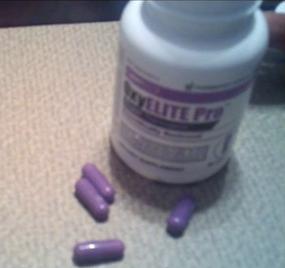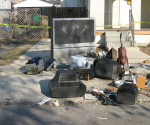The US is currently facing one of the biggest epidemics in its history, and the problem probably isn’t what you think it is…
..It isn’t ISIS..
..It isn’t Iran..
..It isn’t even guns. In fact, this “epidemic” is responsible for more deaths every year than guns are.
So what is it that is killing Americans in unprecedented numbers? Prescription drugs. America is currently in the grip of a prescription drug epidemic the likes of which it has never seen before. It is a serious problem that grows worse by the day as increasingly large amounts of the population turn to prescription drugs to get their fix.
For example, the second most widely-used prescription drug in the US is the painkiller Hydrocodone and Acetaminophen, which goes by the name of Vicodin. While in moderate doses Vicodin is an effective pain reliever, it also produces a high in users, who can quickly become physically dependent on the drug. There is no shortage of pain pill addicts who started their dangerous journey after innocently using Vicodin as prescribed by their doctor following a surgery. Vicodin also goes by the name Lortab in some circles.
So just how widespread is use of Vicodin? Well, in 2014 there were 119 million prescriptions written for this addictive drug. And while some of these prescriptions were no doubt prescribed for legitimate reasons by well-meaning doctors, the fact is that there are is simply not enough legitimate demand in the US to account for such a high quantity of prescriptions being written. There is a large and murky black market with an insatiable demand for drugs like this.
The way that drugs like Vicodin work is they inhibit the CNS (Central Nervous System) and thereby relieve pain in users. Users of the drug report experiencing a feeling that all is well in the world and that there is nothing to worry about. However, when it comes to pain pill abuse, Vicodin is truly just the tip of the iceberg, and a vast, even more dangerous world lurks below.
Most of the growth in the opioid industry doesn’t actually come from Vicodin. Instead, it comes from the powerful painkiller Oxycontin, which accounts for around 30% of the painkiller market. Oxycontin is typically prescribed to people in severe amounts of pain, like those recovering from an invasive surgery or those facing a terminal illness. In such cases of course Vicodin has a legitimate use in that it helps to relieve pain, but when used inappropriately it is anything but legitimate. Think of Oxycontin as being similar to Vicodin, but being far more potent and addictive. If you have the unfortunate experience of becoming addictive to this or another drug, you might consider seeking the help of a Los Angeles sober living company that can help you to recover.
The sad fact is that today Oxycontin is overprescribed and overused by many Americans, and this is a direct result of the marketing dollars that have been put behind this drug. For example, the company that manufacturers Oxycontin, Purdue Pharma, spent $200 million in dollars marketing their products (of which Oxycontin is the main one) all the way back in 2001. Since then this number has likely grown.
In addition to being addictive, there is another problem with Oxycontin- it’s expensive! This means that, as people develop a habit using this drug, it becomes harder and harder to sustain the habit. And instead of bying more “OC”, which an addict often can’t because it is so expensive (up to $80 a pill), people turn to alternate means instead. And more often than not, those alternate means have one name- Heroin.
Oxycontin has earned the moniker hillbilly heroin because of this, but a substantial amount of users eventually (or quickly) graduate to the big leagues and start playing with the big boys- Heroin.
In fact, an estimated 4 out of 5 heroin addicts began their opiate use with pain medication so the link is clear.
This problem is only growing in scope: in 2013 an approximately 46,000 Americans died from a drug overdose. And of those 46,000 who died, more than half died of an overdose caused by prescription painkillers and/or heroin.
If there is one thing to take away from this article it is this- your doctor doesn’t necessarily know best. If he or she is prescribing a highly addictive to you, it is up to you to ask questions aggressively, solicit a second opinion, and make sure that using such a powerful substance is absolutely necessary.
Guest Author: Brendan David















